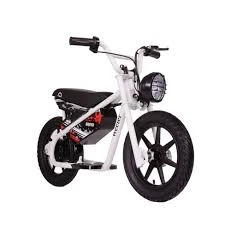
- Afrikaans
- Albanian
- Amharic
- Arabic
- Armenian
- Azerbaijani
- Basque
- Belarusian
- Bengali
- Bosnian
- Bulgarian
- Catalan
- Cebuano
- Corsican
- Croatian
- Czech
- Danish
- Dutch
- English
- Esperanto
- Estonian
- Finnish
- French
- Frisian
- Galician
- Georgian
- German
- Greek
- Gujarati
- Haitian Creole
- hausa
- hawaiian
- Hebrew
- Hindi
- Miao
- Hungarian
- Icelandic
- igbo
- Indonesian
- irish
- Italian
- Japanese
- Javanese
- Kannada
- kazakh
- Khmer
- Rwandese
- Korean
- Kurdish
- Kyrgyz
- Lao
- Latin
- Latvian
- Lithuanian
- Luxembourgish
- Macedonian
- Malgashi
- Malay
- Malayalam
- Maltese
- Maori
- Marathi
- Mongolian
- Myanmar
- Nepali
- Norwegian
- Norwegian
- Occitan
- Pashto
- Persian
- Polish
- Portuguese
- Punjabi
- Romanian
- Russian
- Samoan
- Scottish Gaelic
- Serbian
- Sesotho
- Shona
- Sindhi
- Sinhala
- Slovak
- Slovenian
- Somali
- Spanish
- Sundanese
- Swahili
- Swedish
- Tagalog
- Tajik
- Tamil
- Tatar
- Telugu
- Thai
- Turkish
- Turkmen
- Ukrainian
- Urdu
- Uighur
- Uzbek
- Vietnamese
- Welsh
- Bantu
- Yiddish
- Yoruba
- Zulu
Aug . 26, 2024 06:20 Back to list
Optimizing Gear Shifts with an Electronic Shifter for Mountain Biking Adventures
The Rise of Electronic Shifters in Mountain Biking
In the world of mountain biking, technology is continuously evolving to enhance performance and improve the rider's experience. One of the most significant advancements in this domain is the adoption of electronic shifters. These cutting-edge systems have transformed how riders interact with their bikes, offering precision, reliability, and ease of use.
What Are Electronic Shifters?
Electronic shifters utilize electronic signals to control gear changes, replacing the traditional mechanical cables and levers. This system typically consists of a battery-powered groupset that communicates wirelessly, allowing for seamless shifting with the push of a button. Popular brands like Shimano with their Di2 system, and SRAM with their eTap, have set the standard in this technological evolution.
Advantages of Electronic Shifting
One of the primary benefits of electronic shifters is precision. Mountain biking often presents challenging terrains and conditions, necessitating quick and accurate gear changes. With electronic shifters, riders can expect crisp and reliable shifts, reducing the chances of missed gears or chain drops, which can lead to accidents or mechanical failures.
Moreover, electronic shifters are designed to be more resilient against the elements. Traditional mechanical systems are prone to dirt, mud, and moisture, which can affect their performance over time. In contrast, electronic systems have fewer exposed moving parts, making them less susceptible to these harsh conditions common in mountain biking environments.
electronic shifter mountain bike

Another significant advantage is the ergonomic design. The simplicity of a button push compared to the more complex motion of a mechanical lever can greatly improve a rider’s comfort, especially during long rides. Riders can shift gears more efficiently, allowing for increased focus on the trail ahead rather than fiddling with cumbersome gear levers.
Installation and Maintenance
While the advantages are compelling, it's essential to acknowledge that electronic shifters do come with some considerations. Installation can be more involved than traditional systems, often requiring a bit of technical know-how or the assistance of a professional bike mechanic. Riders must also be conscious of battery life; while many systems offer long-lasting batteries, being caught on a ride with a dead battery can be a frustrating experience.
Nonetheless, maintenance is often straightforward. Most electronic systems feature self-diagnostics, alerting the rider to potential issues before they escalate. Additionally, the absence of cables reduces the need for frequent adjustments, which is a significant time-saver for many bikers.
Conclusion
The shift to electronic shifters represents a paradigm change in the mountain biking landscape. Offering precision, durability, and user-friendly operation, these systems are becoming increasingly popular among riders looking to enhance their performance and enjoyment on the trails. While they require a different approach to maintenance and installation, the benefits far outweigh the drawbacks. As technology continues to advance, electronic shifters are likely to play a vital role in the future of mountain biking, pushing the boundaries of performance and innovation. For any serious mountain biker aiming to optimize their ride, considering an electronic shifter could be the next step in achieving the ultimate biking experience.
-
The Ultimate Kids' Four-Wheeler Experience
NewsJul.09,2025
-
The Ultimate Guide to Mountain Bikes: Gear Up for Your Ride
NewsJul.09,2025
-
The New Age of Cycling: Electric Bikes for Every Rider
NewsJul.09,2025
-
The Best Kids Bicycles: Ride in Style and Safety
NewsJul.09,2025
-
The Best 3-Wheel Scooters for Kids: Fun, Safety, and Adventure
NewsJul.09,2025
-
Revolutionize Your Ride: Affordable Electric Bikes
NewsJul.09,2025
-
Finding the Perfect Mountain Bike for Every Rider
NewsJul.09,2025



